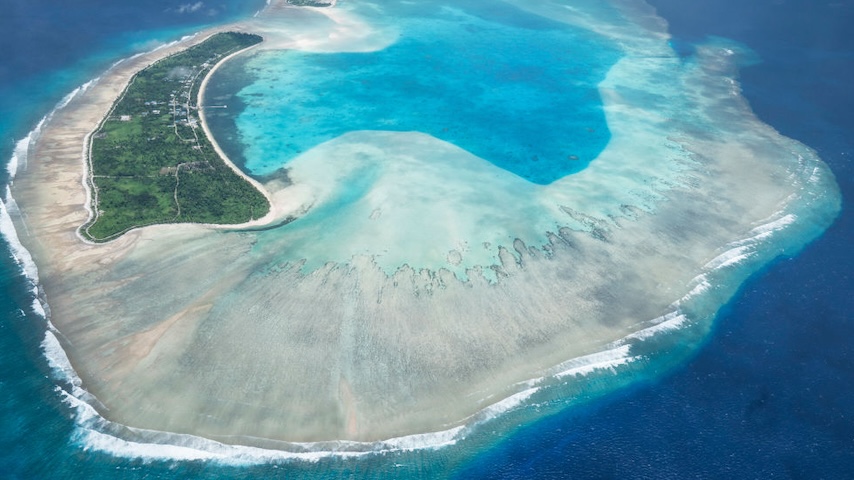Save the Pacific, Save the World: U.N. Chief Puts Island States at the Center of Climate Fight
Photo by Benjamin Lowy/Getty Images
Pacific island nations are the canaries in the coal mine, if the coal mine were slowly filling up with water.
“The decisions world leaders take in the coming years will determine the fate, first of Pacific Islanders – but also of everyone else,” said United Nations Secretary-General António Guterres in a speech this week to the Pacific Islands Forum in Nuku’alofa, Tonga. “In other words: If we save the Pacific, we save the world.”
Two reports were released alongside the Forum this week, from the U.N. and the World Meteorological Organization, highlighting the risks to this part of the world — and that fundamental truth that if we somehow stave off the worst for these sentries, other at-risk places with far more people living in them might also be saved.
“Already we are seeing more coastal flooding, shoreline retreat, saltwater contamination of freshwater supplies and displacement of communities,” said WMO secretary-general Celeste Saulo, according to a press release accompanying the State of the Climate in the Southwest Pacific report. “Human activities have weakened the capacity of the ocean to sustain and protect us and – through sea level rise – are transforming a lifelong friend into a growing threat.”
That report stresses the rising temperatures, acidifying oceans, and most importantly, the rising sea level in the Pacific region. The seas do not rise evenly across the planet — and most Pacific island nations, where most people live only a few feet above the waves already, are seeing a rise greater than the global average.
In a more general U.N. report covering the latest sea level rise science and projections, the threat to small island nations is even more clear. Take tiny Palau, home to around 500 islands and 18,000 people: during the 2010s, the island of Malakal an average year saw fewer than five days of flooding. By the 2050s, that number will reach 30 days a year; in a “worst year” in the 2050s, the island would flood on 100 days.
Other islands fare even worse. Some spots in the Cook Islands will jump from just a handful of days of flooding to 50 or 75 days in a normal year around mid-century; a worst-year scenario would edge toward flooding on half the year’s days. One island in Kiribati will flood 165 days of that theoretical worst year. At what point is that number unlivable?
The only bright side here is that, contrary to expectations, some low-lying islands around the world have so far survived better than expected as the seas rose around them — or even grew a little bit. Coral atolls could theoretically grow toward the sun as the water rises, but built environments on top of those islands don’t have that luxury. The worst of it is very much not theoretical at this point; almost a decade ago now, the seas swallowed five islands in the Solomon Islands whole, just for example. The U.N. report notes that small island states both in the Pacific and elsewhere are home to 70 million people and “already experiencing loss of human life and significant economic damages, particularly from tropical cyclones and increases in [sea level rise].”
An extremely uncomfortable number of Pacific Islanders — 90 percent — live within five kilometers of the coast. In some countries — the Solomon Islands and Vanuatu — more than 60 percent live inside one kilometer from the water. In others — Kiribati, the Marshall Islands, and Tuvalu — over 95 percent of all the countries’ infrastructure lies inside the “low-elevation coastal zone,” which is pretty much what it sounds like.
“The small islands don’t contribute to climate change but everything that happens because of climate change is multiplied here,” Guterres told the BBC. And of course, the oceans won’t stop with these early omens. As Guterres said, eventually, “surging seas are coming for us all.”